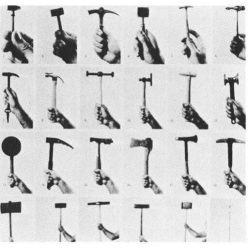McDonald, J. K. and Michela, E. (2019) The design critique and the moral goods of
studio pedagogy, Design Studies, Vol. 62 (C).
This was the reading I was assigned for the first workshop. The concept of ‘critique’, while not unfamiliar to me as an approach to teaching, is something that is rarely adopted in Contextual and Theoretical Studies (CTS). If any ‘critique’ happens in CTS, it would be in the form of formative feedback on students’ draft writing, 1:1 tutorials or discussions in class, rather than formal ‘crits’ that might happen in a studio context. However, there were observations within this reading around student-tutor interaction that I found really interesting and reflected on in relation to my own practice.
The first thing I noted about this paper is that the research is based at Brigham Young University, where the authors teach. As a Mormon university in the US, the emphasis on ‘moral goods’ as the core theoretical framework for the research did not seem surprising. However, it was an interesting question to reflect on: what kind of ‘moral’ values due we implicitly or explicitly assign to particular modes of teaching? How are we framing this moral value to students and what is their perception of it?
The text offers a useful unpicking of different tensions implicit in crits and in class we discussed how this may vary from disciplines. It was really informative to hear from different colleagues teaching across different practices: making/industrial design; illustration; architecture, and how the concept of the ‘crit’ varies in these different settings. In general, this made me reflect on the way we give feedback to students: I often find students can be really tense and nervous when they have their 1-2-1 tutorial. It does feel like a moment of ‘judgement’ for them, when I perceive it as just an informal chat. Of course, this speaks to the different power dynamics at play in the classroom that perhaps need to be more explicitly acknowledged.
I have been thinking of how to run my tutorials – a kind of ‘crit’ in the CTS context – in a way that might more empathetic and less emotionally charged for students. While some seem to thrive in those 1-2-1 conversations in the studio, others feel vulnerable and exposed. I have been thinking about Jill Lepore’s ‘walking office hours’ and how perhaps taking the conversation out of the formal setting of the studio/classroom/whatever room we are given to teach in, might create a space that is more conducive to a less hierarchical and more meaningful connection and conversation with the students. Could we meet in the park for our tutorials? Could we meet in a museum space? Could we sit on sofas in the library or in the canteen? Perhaps even acknowledging this explicitly in the classroom might be a way of working towards those ‘moral goods’ that implicitly underpin our teaching practices.
This journal issue is on my reading list as I plot how to develop my walking curriculum: https://jcacs.journals.yorku.ca/index.php/jcacs/issue/view/2293
